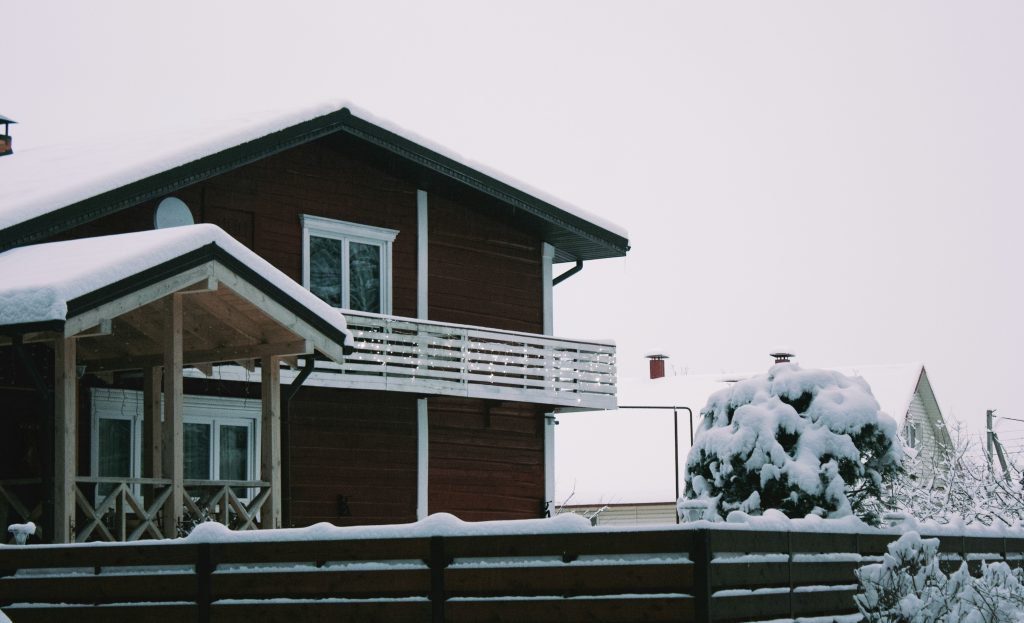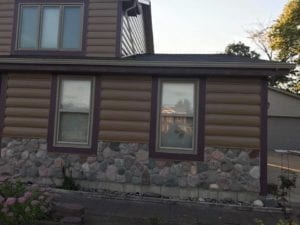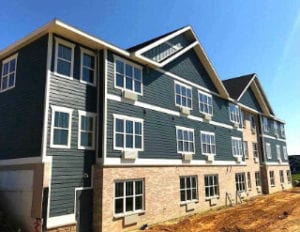When your home sits in a climate that swings from icy January winds to muggy July afternoons, choosing the right windows isn’t just a design decision, it’s a comfort investment. Homeowners across Wisconsin ask the same thing every season: What kind of windows actually help with both heat loss in winter and heat gain in summer?
That question leads to even bigger ones. What’s the difference between double and triple-pane? How much does energy-efficient glass really cost? And does it even matter who installs them?
We’ve helped hundreds of homeowners sort through these same concerns. In this guide, we’ll break down everything you need to know, from window materials and energy ratings to installation details and seasonal issues. We’ll also help you understand the pros and cons of different upgrades and when it’s time to call in a pro. Let’s get to it.
Not every “energy-efficient” window is built for the Midwest
We’ve seen homeowners install fancy-looking windows with low-e coatings only to discover frost forming inside by January. The truth? Labels and specs don’t always translate to real-world performance in the upper Midwest.
A window rated for “energy efficiency” in Georgia won’t cut it during a Wisconsin cold snap. Region matters.
Window performance depends on several interacting parts, glass type, gas fills, spacer design, frame material, and installation quality. You can have the best glass, but if the frame leaks or wasn’t properly sealed, you’ll still feel drafts.
Warning: Many budget “energy-saving” windows meet bare minimum code but don’t provide year-round efficiency. Pay attention to R-values and solar heat gain coefficients specific to Wisconsin climate zones.
Key components of energy-efficient windows explained
Understanding U-Factor, SHGC, and R-Value
Three measurements determine a window’s thermal performance:
- U-Factor measures heat transfer. Lower = better for winter.
- Solar Heat Gain Coefficient (SHGC) measures how much solar heat gets through. Lower = better for summer.
- R-Value measures insulation value. Higher = better overall.
In Wisconsin, ideal specs for year-round performance:
- U-Factor below 0.30
- SHGC around 0.30–0.40
- R-Value of 3 or higher for full units (glass + frame)
Note: These numbers vary slightly by home orientation and shading, but staying close to these ranges helps balance summer sun and winter chill.
Glass choices: Double vs. triple-pane
Double-pane windows are standard, but triple-pane models offer better resistance to cold, especially useful in older homes or rooms facing north. They come with an additional argon or krypton gas fill, reducing heat transfer even more.
Pro tip: Triple-pane windows often cut sound transmission significantly, a bonus if you live near roads or schools.
Frame materials and their hidden impact
Comparing vinyl, wood, fiberglass, and composite
The frame doesn’t just hold the glass, it contributes to overall insulation and air-tightness.
- Vinyl: Affordable, decent performance, but prone to expansion in heat.
- Wood: Excellent insulator but needs maintenance.
- Fiberglass: Great all-around option, stable across seasons.
- Composite: Blends materials for balance, often higher cost.
Warning: Poor-quality vinyl frames can warp over time, especially on sun-exposed sides of the home. Warping can lead to seal failure and moisture buildup between panes.
Wisconsin weather and window upgrades that matter
Ice dams, condensation, and summer sun
When winters drop below 10°F and summers climb past 85°F, windows are under constant pressure.
- Ice dams form from indoor heat loss near eaves, often worsened by leaky windows.
- Condensation on interior panes signals poor insulation or improper humidity control.
- South-facing windows can cause overheating in summer without low SHGC ratings or shade.
Note: For homes with cathedral ceilings or large south-facing windows, consider using thermal curtains or exterior shading in summer to reduce cooling loads.
Reality check: Even the best window won’t solve poor attic insulation or bad HVAC design. Think of energy-efficient windows as one layer of your home’s thermal envelope, not a standalone fix.
Costs, timelines, and what to expect during a window project
Average pricing and replacement timing in 2024–2025
Here’s what you’re likely to encounter in Wisconsin:
- Double-pane vinyl window replacement: $600–$850 per window (installed)
- Triple-pane fiberglass/composite window: $1,000–$1,400 per window
- Typical project duration: 2–5 days for a full home (10–15 windows)
Pro tip: Winter installations are possible, but wind chill and snow can cause delays. Spring and fall offer better sealing conditions and more flexible scheduling.
Note: Rebates may apply in 2025 through local utility companies or energy efficiency programs, check Focus on Energy Wisconsin for the latest.
When DIY doesn’t cut it
Common errors with self-installation
Installing a window requires more than a square opening and some foam. We’ve repaired too many jobs where the frame wasn’t level, the insulation was gapped, or flashing tape was misapplied.
Warning: A single poorly installed window can create long-term rot in your wall cavity. That’s not a small fix.
Some signs to bring in a pro:
- Frame is out-of-square
- Mold or rot is visible
- You’re switching window styles or sizes
- Multiple windows need replacing for curb appeal or home resale
Experience counts especially in extreme climates
According to our data from over 400 window installs in Wisconsin since 2022, homes with south-facing triple-pane glass and low-conductivity frames showed up to 20% lower heating costs in the first year.
And when it comes to labor, we’ve seen the difference between textbook installation and real-world performance.
FAQ: Energy-Efficient Window Decisions
What’s the best time of year to install energy-efficient windows?
Spring and early fall are ideal in Wisconsin. These seasons offer moderate weather that helps with sealing and curing. You’ll also avoid the extreme winter rush or summer backlogs.
How much do energy-efficient windows actually save on energy bills?
In most Midwest homes, energy-efficient replacements can lower heating and cooling bills by 10–20% annually. The exact savings depend on the age of your old windows, house size, and insulation levels.
Are triple-pane windows worth it in southern Wisconsin?
In many cases, yes. While triple-pane adds 10–20% to the cost, the benefits show up in lower drafts, better comfort near windows, and quieter rooms. They’re especially worthwhile in older homes or those with large north-facing glass.
Can I replace just one or two windows, or should I do them all at once?
You can definitely replace windows in stages. Start with the worst performers, often older wood or aluminum units with visible leaks or condensation. Prioritize bedrooms and living rooms for comfort, and expand as budget allows.
Plan your next step with confidence
We know these decisions can feel overwhelming. Between cost, style, and seasonal planning, it’s easy to get stuck in research mode. But don’t let another year go by with heat slipping out and summer glare pouring in.
If you’re unsure where to start, our team at Heins Contracting can walk you through your options with zero pressure. We’ve worked on homes from Madison to Monroe, and we understand what windows need to handle year-round in southern Wisconsin.
Don’t just think in terms of savings, think in terms of comfort, durability, and peace of mind. Every well-installed window is one less worry when winter hits or summer swelters.




